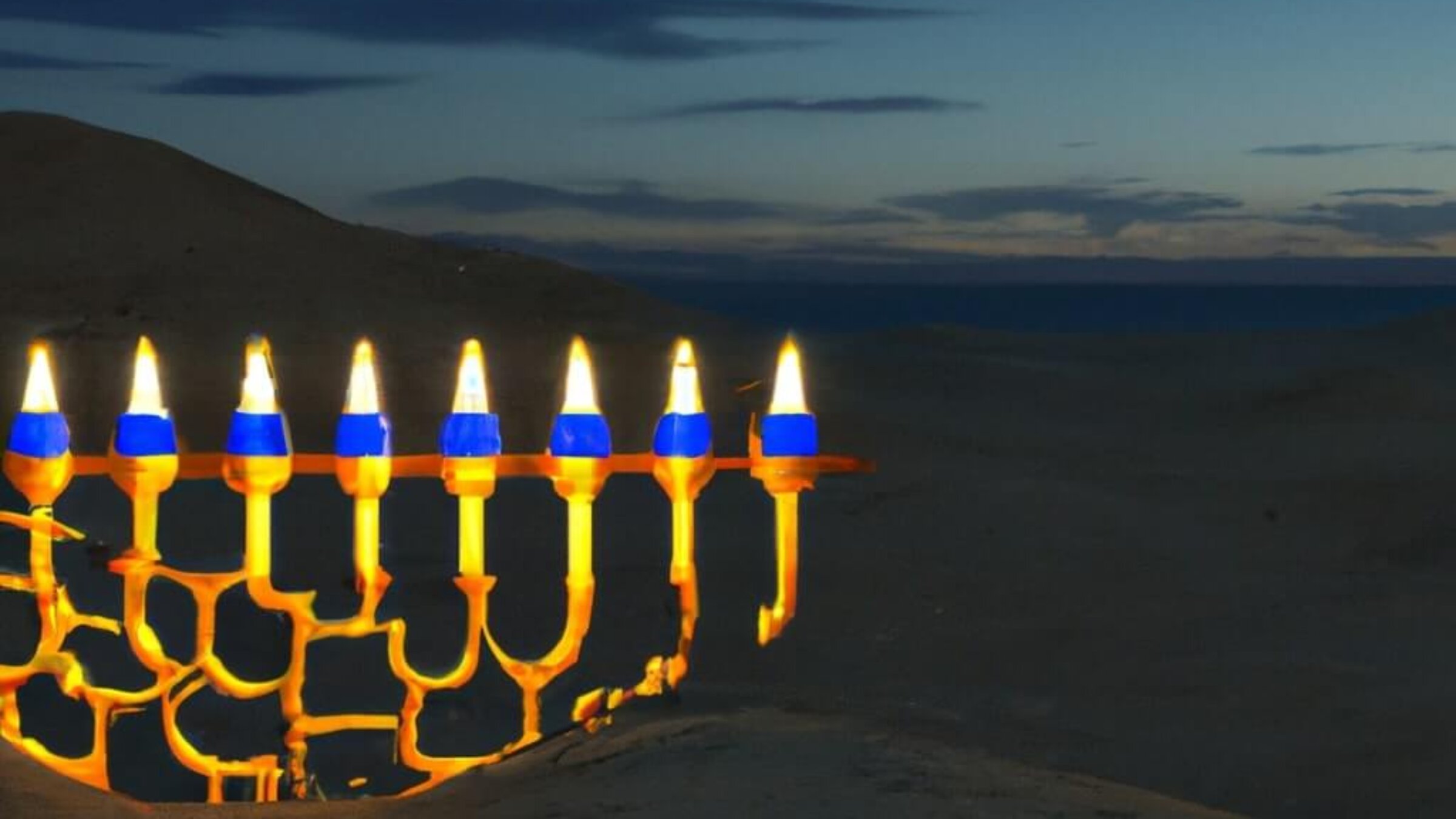Hanukkah is a time to celebrate the power of Jewish self-determination
Hatred of Jews and Israel comes from exactly the same place, and we must channel the Maccabees to resist it

An AI-generated image of the hanukiah lit in the Israeli desert. Graphic by Nora Berman/DALL-E
While Hanukkah may feel like a peaceful holiday, it’s really a celebration of military victory.
Two thousand years ago, Seleucid Greek invaders banned Jewish education and ritual, and massacred countless innocent Jews for attempting to resist. In response, Jewish priest Judah Maccabee inspired and led a grassroots revolt, expelling the invaders, rededicating the temple in Jerusalem and renewing traditional Jewish ways of life.
For over two millennia, Jews have come together during the year’s darkest nights to commemorate this restoration of Jewish sovereignty in the holy land.
The rich and diverse fabric of international Jewry may have different customs and traditions, but we all are celebrating the same thing: the right to live as proud individual Jews, and our right to do so as a people in our national historic homeland.
The Maccabean Revolt is so central to our tradition because it restored both these fundamental rights. Unfortunately, both are again under threat today.
Anti-Jewish hate crimes are on the rise, and cultural icon Kanye West recently made headlines for shockingly antisemitic comments. His ramblings were rightly condemned by cultural and political leaders as naked Jew-hatred that would likely lead to violence against innocent Jewish people, and his words have already inspired a slew of anti-Jewish aggression that shows no signs of slowing down.
West also claimed to be a victim of plots by “the Jewish media” and “Zionist Jews.” He later performed a bizarre impersonation of Israeli prime minister-designate Benjamin Netanyahu: “I’m going to kill you and take your children … we control the history books, and we control the banks, and we always kill people.”
To casual listeners, these tirades against an Israeli leader may have been hard to distinguish from traditional antisemitic conspiracy theories. Complete with modern blood libels and tropes, West’s mashup reveals an uncomfortable and nearly universal truth: people who attack Jews attack Israel, and people who attack Israel attack Jews.
For West, after denigrating doctors, music executives, financial professionals, and virtually every Jew in his orbit, it wasn’t a stretch to turn the Israeli leader into his Jewish punching bag. To anyone disgusted by the idea of Jews practicing their faith in peace — even, God forbid, being proud of it — the Jewish state, which protects the pursuit of Judaism in a historically visible way, is singularly repulsive.
Unfortunately, it’s not just West. Every time Israel is dragged through the mud in the media, attacks on Jews in New York and London spike to record levels.
What could possibly have inspired these antisemitic attacks? While some commentators seem genuinely baffled by this rhetorical question, the Jew-haters behind the violence know full well what’s going on. True antisemites have long been honest about one thing: Their loathing of Jews and their hatred of Israel comes from exactly the same place.
While criticism of Israel’s policies is of course inherently valid, it’s no coincidence that it’s somehow always the Hitler fanboys, on both sides of the aisle, who rally against the Jewish State.
The fact that this concoction is nothing new, and that it was practiced by Greek invaders 2,000 years ago to eradicate both Judaism and Israel, may come as a surprise to some. But there is nothing new under the sun — the Seleucid-Kanye continuum shows that antisemitism and opposition to Jewish self-determination have always been the same thing.
Those who really want to stand with Jews must stand with Israel, and those who want to stand with Israel must stand with Jews. This message, equally unwelcome on both poles of the political spectrum, is as urgent as it’s ever been.
Two thousand years ago, Jewish revolutionaries recaptured Jerusalem from the Greeks and rededicated their holy temple. They reaffirmed the power of communal identity grounded in faith, and the necessity of autonomy to ensure our ability to exercise it.
Just as they triumphed against tyranny then, if we remain firm in our commitment to be who we are, we too will be victorious now. For the most overwhelming darkness is banished in moments by the smallest flashes of light.
To contact the author, email [email protected].












